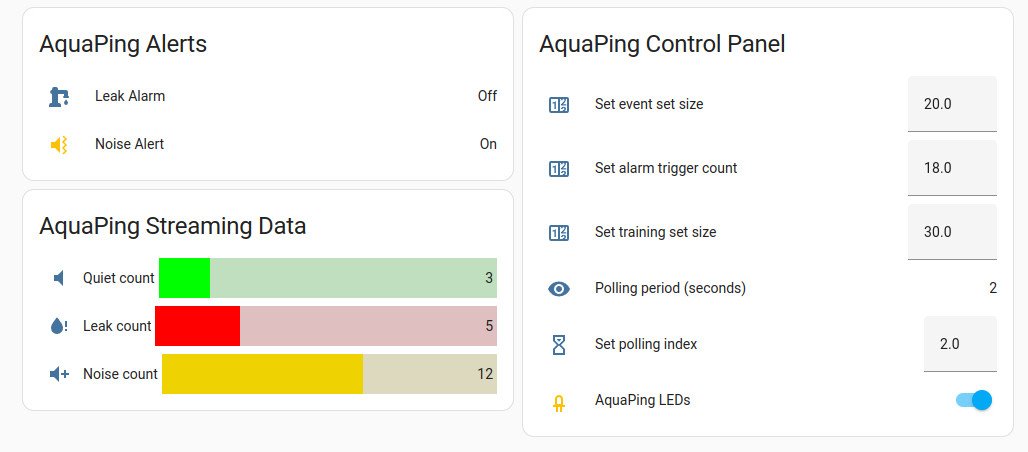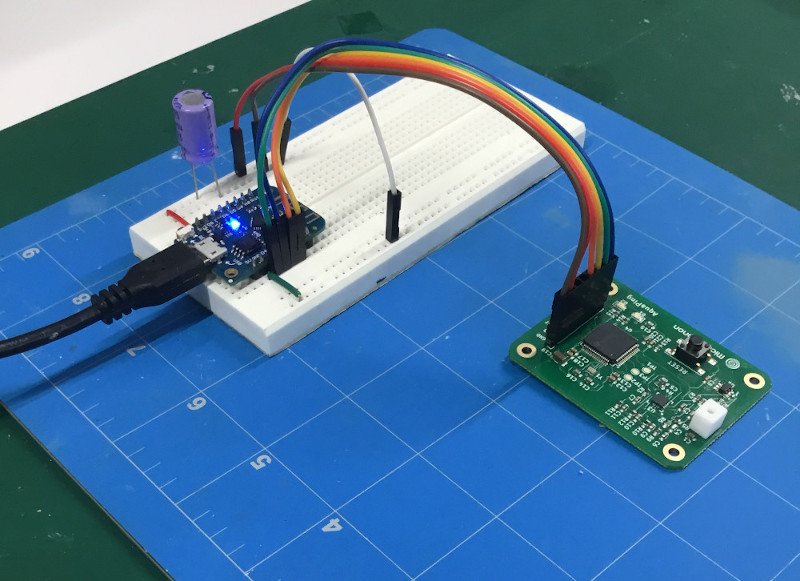Project update 10 of 11
AquaPing Now Works with Home Assistant
by Mike HThe AquaPing acoustic leak sensor has been configured to work with Home Assistant. For this demonstration, an inexpensive D1-mini ESP8266 WiFi module is used to provide a wireless link to Home Assistant as well as two-way communication with the sensor via I2C. WiFi is certainly not the preferred wireless protocol for long-life, battery-powered IoT applications, but this application serves to demonstrate the AquaPing’s features and capabilities in the Home Assistant environment. The dashboard screenshot depicts the sensor streaming data in the presence of acoustic noise that would mask a very weak leak signal. The AquaPing is adept at identifying this noise and has activated a noise alert on a dedicated interrupt line. Noise recognition also helps in avoiding false alarms.
The photo below shows the D1-mini powering the AquaPing from its 3V3 DC pin. A decoupling capacitor (220 uF electrolytic used here) is essential to reduce noise from poorly filtered power sources that are often found on development boards like the D1-mini. This noise can push the front-end gain stages into oscillation. Extra care must be taken when detecting ultra-weak signals! Noise and leak interrupts from the AquaPing are routed to individual GPIO pins on the D1-mini, which also has built-in pullup resistors for the I2C lines. A USB cable powers the D1-mini and can also be used for communication via serial UART if desired.
This Home Assistant project requires installation of the native ESPHome Add-on. The optional custom bar graphs are rendered with the bar-card and config-template-card modules that are preferably installed using Home Assistant Community Store (a GitHub account is required). Development was done running the Home Assistant operating system in a VirtualBox on Ubuntu-Linux, but this application should be agnostic to the host hardware. Information to build this interface including the D1-mini firmware, the ESPHome yaml file, and custom dashboard code can be found in the project GitHub repository.

